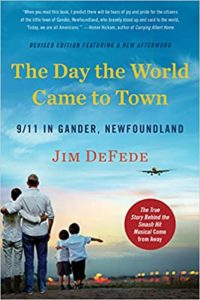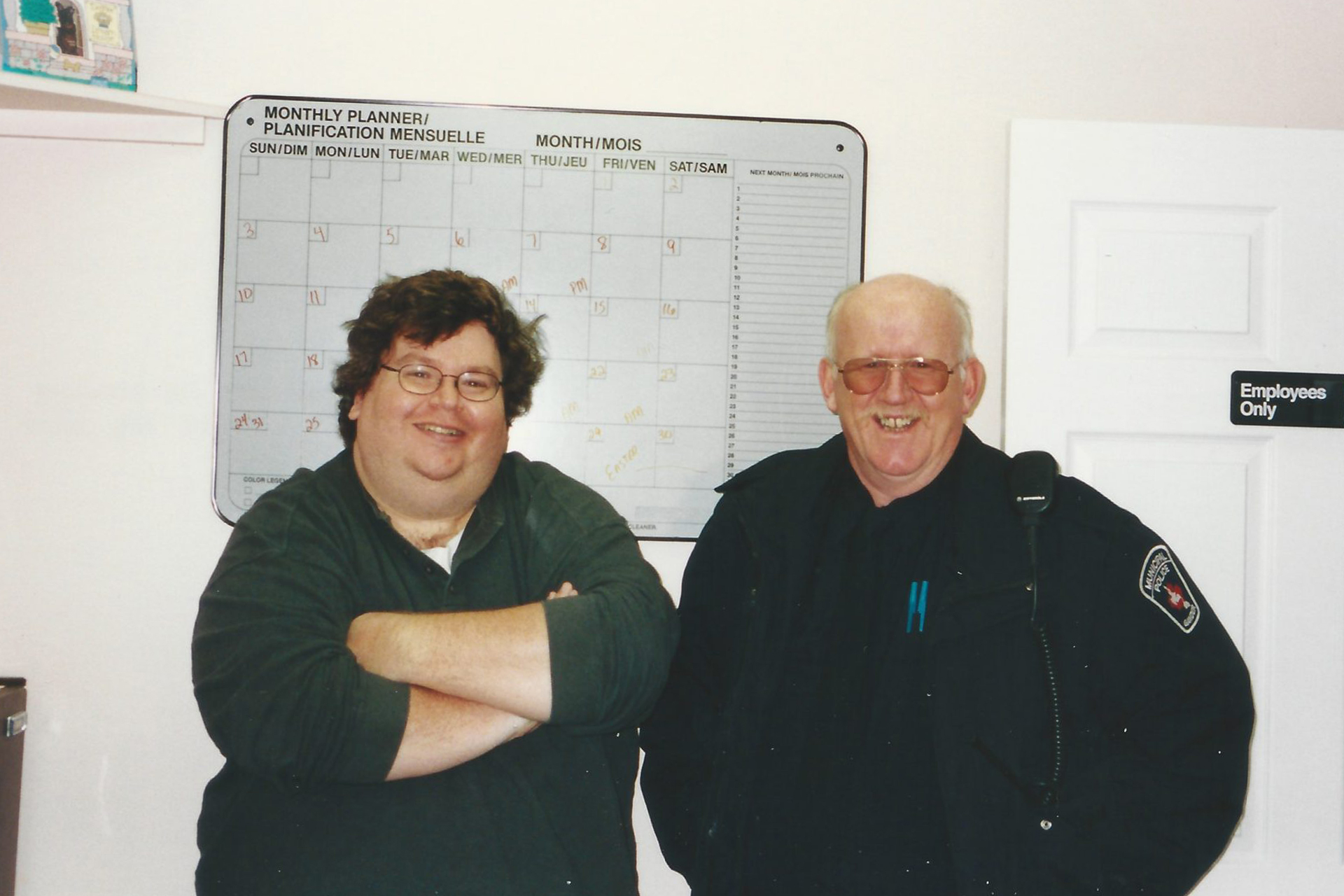
CSU alumnus Jim DeFede recently re-released his book The Day the World Came to Town, which focuses on a small Canadian town that welcomed stranded passengers on 9/11. Photo courtesy of Jim DeFede
Like most Americans, Colorado State University alumnus Jim DeFede remembers everything about Sept. 11, 2001.
“I was in Miami,” said DeFede, who attended CSU from 1981-1986 and majored in political science. “My sister had called me and said that a plane had crashed into one of the towers. I turned on the TV and as I’m watching, I saw the second plane hit the second tower. I think I spent the next two or three days just sitting in front of the television with my mouth agape, not really knowing or comprehending what had occurred.”
In those initial hours — as the country reeled in horror — 38 jetliners originally headed for the United States were rerouted to the airport in Gander, Newfoundland, in eastern Canada. For the next four days, the town of 10,000 opened up its arms — and its homes — to 7,000 stranded passengers.
DeFede wrote about those four days in his 2002 book, The Day the World Came to Town: 9/11 in Gander, Newfoundland. The book was recently re-released for the 20th commemoration of 9/11.
An investigative journalist with Miami’s CBS4 News, DeFede had originally been hired to work on a completely different book regarding the tragedy of 9/11. When that deal fell through, his publisher told him he should check out the story of Gander.
He immediately found himself drawn to the idea of people coming together to help those they didn’t even know. So often, DeFede said, there’s an expectation that “someone else” — like the Red Cross or the Salvation Army — will take care of people when tragedies arise.
“Newfoundlanders are an interesting breed of people,” he said. “And when you start understanding their background and their history, you understand why what happened on 9/11 happened.”
Early settlers found Newfoundland, a barren and rugged place, said DeFede, noting its well-earned nickname: “The Rock.” The difficulty of creating a new home in such an inhospitable place created a deeply ingrained attitude of service amongst its people.
“If you’re in trouble, your neighbor just automatically comes to your aid,” he said. “And if your neighbor is in trouble you don’t wait to be called, you go to their aid. Because that’s the only way you’re going to get through the harshness that is Newfoundland.”
Historical ties to U.S.
 Sept. 11 wasn’t the first time the town of Gander stepped in to help the United States. During World War II, the town’s airport became a critical refueling stop for the U.S. military. Every plane headed to Europe stopped in Gander first; and for a time, Gander International Airport was the busiest in the world, DeFede said. With the advent of the jet engine its usefulness waned, and eventually it was used mostly as a stopping point for private jets.
Sept. 11 wasn’t the first time the town of Gander stepped in to help the United States. During World War II, the town’s airport became a critical refueling stop for the U.S. military. Every plane headed to Europe stopped in Gander first; and for a time, Gander International Airport was the busiest in the world, DeFede said. With the advent of the jet engine its usefulness waned, and eventually it was used mostly as a stopping point for private jets.
On 9/11, for the first time in decades, droves of people arrived at the airport. When the stranded passengers were finally allowed to deplane — overwhelmed and frightened by the events that had transpired in New York and at the Pentagon — they were met with a feast prepared by the townspeople. Bus drivers in the middle of a strike came off the picket lines to take people to temporary shelters. And when the small town’s hotels, schools and churches became overwhelmed, residents opened up their homes to the stranded passengers. No questions asked.
“You couldn’t have picked a better location to drop off 7,000 people,” DeFede said. “And realize that they were going to be taken care of.”
In February 2002, DeFede spent six weeks in Gander, interviewing residents who had housed passengers. The story became one not only of the town’s enormous generosity but also of the friendships that developed during that time. When re-interviewing the residents and the passengers to update their stories for the book’s re-release, he said most had continued to stay in touch with each other during the past two decades. DeFede, who got his start in journalism as a reporter for The Rocky Mountain Collegian, said it had all the hallmarks of a great story. It made him actually grateful that the other project hadn’t worked out.
“This was a much more interesting story than the one I was originally hired to write,” he said.
A standout student
But DeFede has always had a nose for a good story, recalled CSU Professor Emeritus and former chair of the Department of Political Science John Straayer.
“He was always tenacious about chasing issues,” said Straayer, remembering his former legislative intern. “And he also had an outrageously great sense of humor and determination.”
While he worked with hundreds of students during the 40 years he ran the University’s legislative internship program, Straayer said DeFede was impossible to forget. In 1984 DeFede — who later served as Associated Students of Colorado State University President — was an intern with the program, which gives students the opportunity to work at the State Capitol for House and Senate members.
The program is now housed within the Straayer Center for Public Service Leadership. Along with researching policy issues and governance processes and hosting workshops and presentations for the public, the center prepares future public service leaders through professional development opportunities.
Straayer said it’s no surprise that DeFede would pursue a career that allowed him to use his tenacity and interest in public service. But DeFede says it was surprising, even to him, that he was the reporter to write this particular book.
“There’s none of the cynicism, there’s none of the skepticism,” he said. “This is (about) the goodness and the humanity, which is not something as an investigative reporter, especially in Florida, that you uncover very often.”
Particularly right now as the COVID-19 pandemic continues, and increasing tensions over masks and vaccinations make people seem more divided than ever.

CSU alumnus Jim DeFede stands with Gander constable Oswald Fudge in a photo from 2002. Photo courtesy of Jim DeFede
DeFede says a recent conversation with Gander resident and former constable Oswald Fudge reminded him of why this story is still needed 20 years later.
“I asked him, ‘Why does the story of Gander resonate so much still to this day?’” DeFede said. “He said, ‘You look around today and you have people fighting in airports. You have people fighting in supermarkets, yelling and screaming and getting angry, and people just being mean. And they see and hear about what happened in Gander, and they think to themselves, ‘I remember a time when people were better, and wouldn’t it be nice if we could get to that again?’
“Now, the cynic in me tells me that that’s probably not going to happen,” DeFede said. “But the experience in Gander says it just might.“